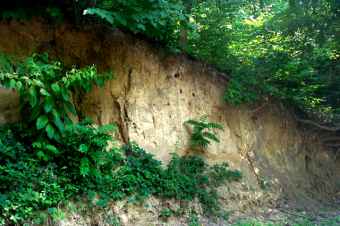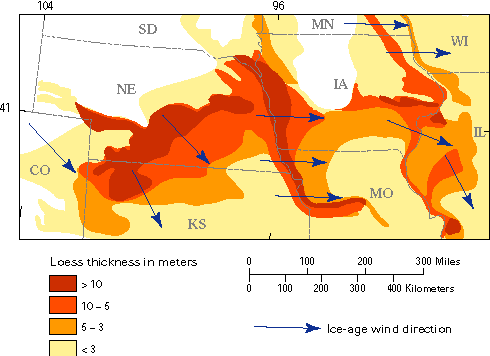LoessFigure 20. 12 Loess deposit on bluff above the Illinois River, Pierre Marquette State Park, Illinois. (Courtesy M. Ritter) Click image to enlarge Loess is principally wind deposited silt, much of which was eroded from Pleistocene glacial sediments. Vast accumulations are spread across the upper Midwest United States, with significant deposits along major rivers like the Mississippi. As glaciers advanced across North America they ground the underlying rock into a powder-like "glacial flour". This sediment is laid down by glacial melt water and later eroded from the dry deposit by strong wind. The Loess Hills of Iowa and Loess Plateau of China are two well-known examples of loess topography.
Figure 20.13 Loess map of Iowa and surrounding
region. |


